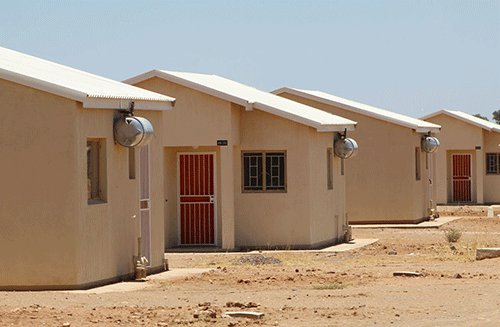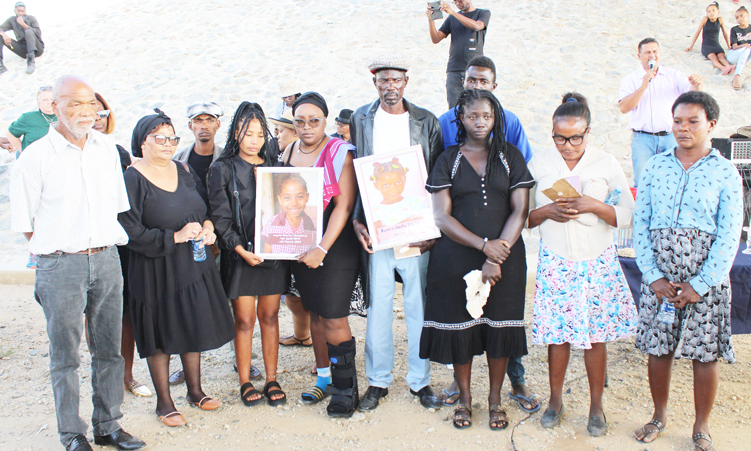Much mental and other activity focuses on urban areas.
It is here in Namibia’s towns, cities and settlements that most of us live. Other energy is thinly dispersed across Namibia’s vast rural landscapes.
But what about Namibia’s peri-urban zones that encircle the many people and intense economic activity concentrated in urban centres?
There are no peri-urban zones around many towns where boundaries between urban plots and farms are sharp, often no more than the width of a fence or road.
In recent years, broader areas of semi-urban housing have developed around towns in communal areas.
This is where many people who work in town have built homes on cheap parcels of communal land.
No municipal taxes are levied and so they enjoy the benefits of proximity to town at little cost.
Several similar housing estates have developed around Windhoek. All these are residential areas.
A PRODUCTIVE EXAMPLE
What is missing around most towns are areas of substantial economic activity and production.
This seems a pity, especially for farmers who might sell their produce at urban markets.
Luckily, there is one great example of how this can work and it could be easily copied across the country.
The example is Salem, a hive of activity and sound co-operation and economic practice – just six kilometres from the centre of Rundu.
Run as an independent voluntary association of members, Salem continues to thrive 40 years after it was started between 1984 and 1986.
Thirty-four hectares are under cultivation, mainly with cabbage, onions, sweet potatoes, carrots and tomatoes and with smaller crops of garlic, potatoes, cassava, green maize, butternut, peppers and some fruit trees.
BENEFICIARIES
Overall, we estimate that 500 or more people make most of their income and living from Salem’s 34 hectares of vegetables.
That is an impressive number, probably making Salem among the most productive land in Namibia and among the most productive user of valuable Okavango River water.
The fields are divided between 43 families who pay levies to manage and maintain Salem and to pump water from the nearby Okavango River.
Several relatives are normally engaged in farming each family plot and they usually employ additional labourers.
The family and labourers make up most of the income earners, but another substantial group of beneficiaries are the people who buy and sell Salem’s produce.
Most are women, as many as 40 or 50 of them gathering early each morning to pick the vegetables they will sell later in the day at markets in Rundu.
The competition among these traders can be stiff as each tries to get the freshest vegetables.
They in turn are transported by taxi drivers between Rundu and Salem and then back to Rundu, and they may sell on to other vendors in town.

LESSON FOR NAMIBIA
Salem is a breath of fresh air and a lesson for Namibia.
First, it supports a large number of people on a small area of land while making productive use of irrigated water.
Second, it provides significant income security, which is precisely what all Namibians need for the essentials of life in the 21st century; food security is necessary but provides few modern basics.
Access to income is the great promise of peri-urban agriculture and other enterprises where people can have ready access to amenities and services while being able to communicate and participate in modern society.
In short, peri-urban areas offer people opportunities to make a decent living because goods to sell and markets are close by.
That combination – of marketable commodities and nearby buyers – is rare in rural Namibia and in much of rural Africa, where two questions dominate: What to sell and where to sell it?
Peri-urban areas thus offer worthy alternatives to the development projects that manage only to offer some comfort to rural poverty while keeping Africans in their rural habitats.
Much can be done and much can be gained by promoting the development of agriculture in Namibia’s peri-urban areas.
- – John Mendelsohn is passionate about education, rural economies and land rights
- – Tuwilika Haludilu takes a keen interest in agriculture’s role in development and the way it shapes the livelihoods (income and social capital) of farmers and many other players in the agricultural value chain.
Stay informed with The Namibian – your source for credible journalism. Get in-depth reporting and opinions for
only N$85 a month. Invest in journalism, invest in democracy –
Subscribe Now!










